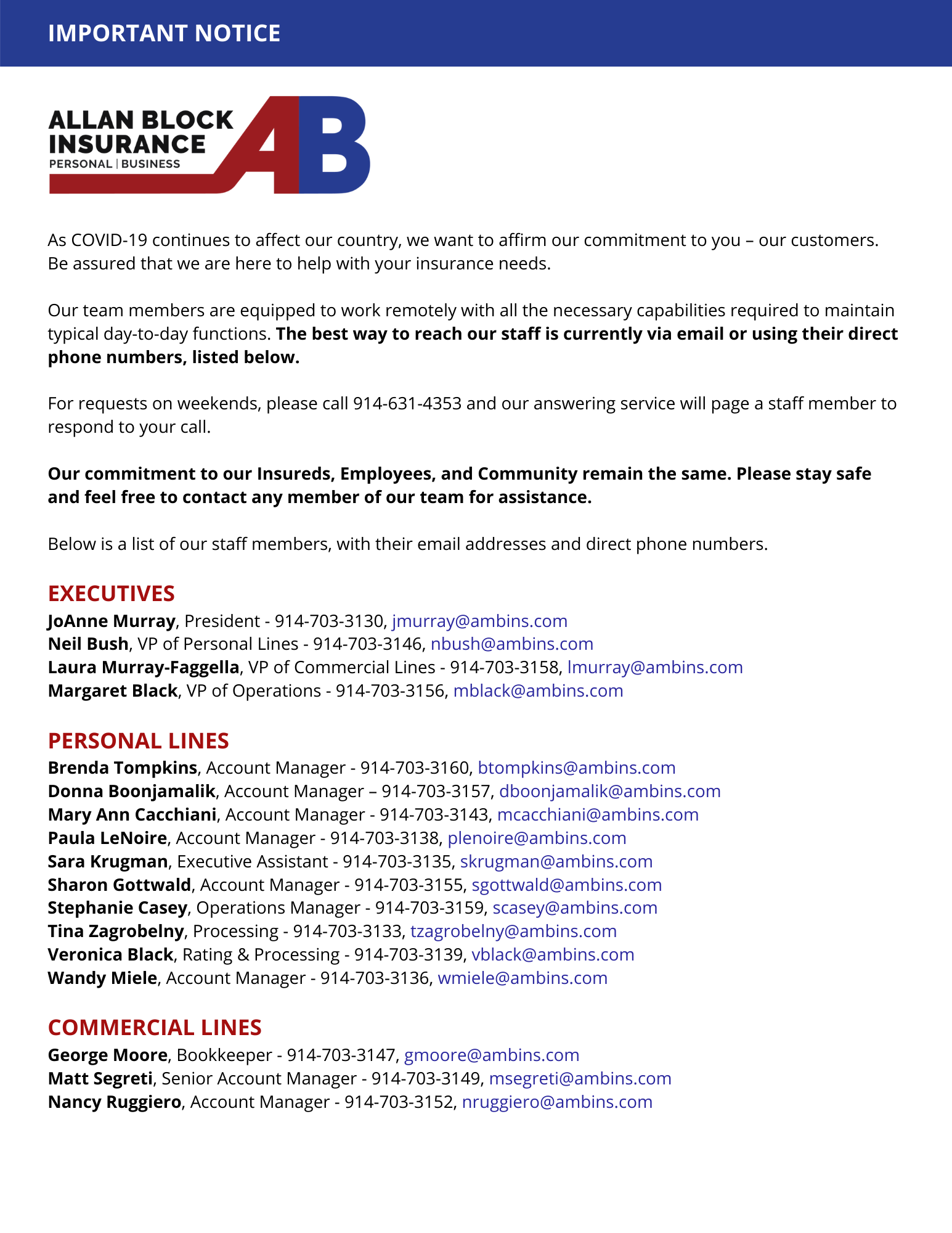There are many issues that can cause setbacks for businesses. Electrical fires can damage inventory and equipment as well as shut down a business temporarily. Customer injuries can lead to lawsuits, natural disasters can destroy property and burglaries can result in thousands of dollars of losses in equipment and valuables.
After any of the above events you’ll have to file a claim with your insurer. But if you aren’t prepared, take too long to file your claim or fail to document all of your losses, you may not receive a full claims payout. You can avoid that by following these tips:
Gather all the information — Before you file a claim, you have to first understand what happened, because the insurer and your claims adjuster will need detailed accounts of the event and circumstances leading up to it.
Look at the insurance policy to see if there are any other necessary steps to take. Some policies include instructions about what to do if certain types of insurable losses occur.
Don’t procrastinate during this time. It’s important that you quickly collect and document all the pertinent information.
File a claim with your insurance agent — The most efficient way to get your claim started is by contacting your insurance agent directly. You can also visit your carrier’s website and go through their claims process, but we recommend reaching out to your agent first.
By contacting your insurance agent first, we can advise you on whether you should file your claim. Claims can impact your renewal premiums, and in certain cases it may make more sense not to file a claim (for example, when the cost of the loss is less than your policy deductible). In addition to answering any questions, we can explain your coverage and properly set expectations for what’s to come.
Additionally, if your claim has any complexity or nuance, we will be able to work with the carrier and/or provide useful advice and guidance.
Whether you report the claim online or over the phone, you will be walked through the claims intake process. Be prepared to provide the information you gathered in the first step because your insurance company will need to know all the details about what and when it happened to properly assess your claim.
Most insurers will contact you within 24 to 48 hours after you file your claim.
Create an inventory of losses — While you wait for the claims adjuster to contact you or for them to come out to assess the damage, you can work on creating an inventory of your losses.
This is essential for providing a clear picture of the loss or damage. Include descriptions of items, their original values and estimated current values. It is also helpful to include a description about the condition of the item before it was damaged.
If it is possible to photograph the damaged items, take photos for the insurer. Find copies of any receipts for damaged items.
It is also helpful to do a walk-through of the damaged area with a video camera or a cell phone video camera. Videos help show the damage live and from multiple angles. Use them to supplement photo files.
Show proof of the loss — Insurers require policyholders to sign sworn statements that show proof of their losses, and the required information must be sent along with the statement. This statement must be made and signed within 60 days of the insurer’s first request for it.
Make temporary repairs if needed — If temporary repairs must be made to prevent further damage or to protect other assets, they can be completed before the adjuster surveys the property. Do not order any unnecessary repairs.
The only types of temporary repairs that should be made are those that will prevent further damage or prevent a possible liability. For example, a temporary roof repair may be necessary to prevent it from collapsing and injuring people, or a broken window may be fixed to prevent rain from coming into a building and causing water damage.
Since repairs are included in the settlement, keep receipts for any services and items purchased. For contracted work, obtain two written bids from separate companies before hiring someone.
The takeaway
Always stay organized when going through the claims process. Keep all papers accessible, and have information ready in the event that an agent or adjuster calls.
When talking to any repair companies or other related parties on the phone, keep track of calls and the reason for the calls. Save receipts for any items that are purchased in relation to the damage. To learn more about what to do during the claims process, give us a call.



